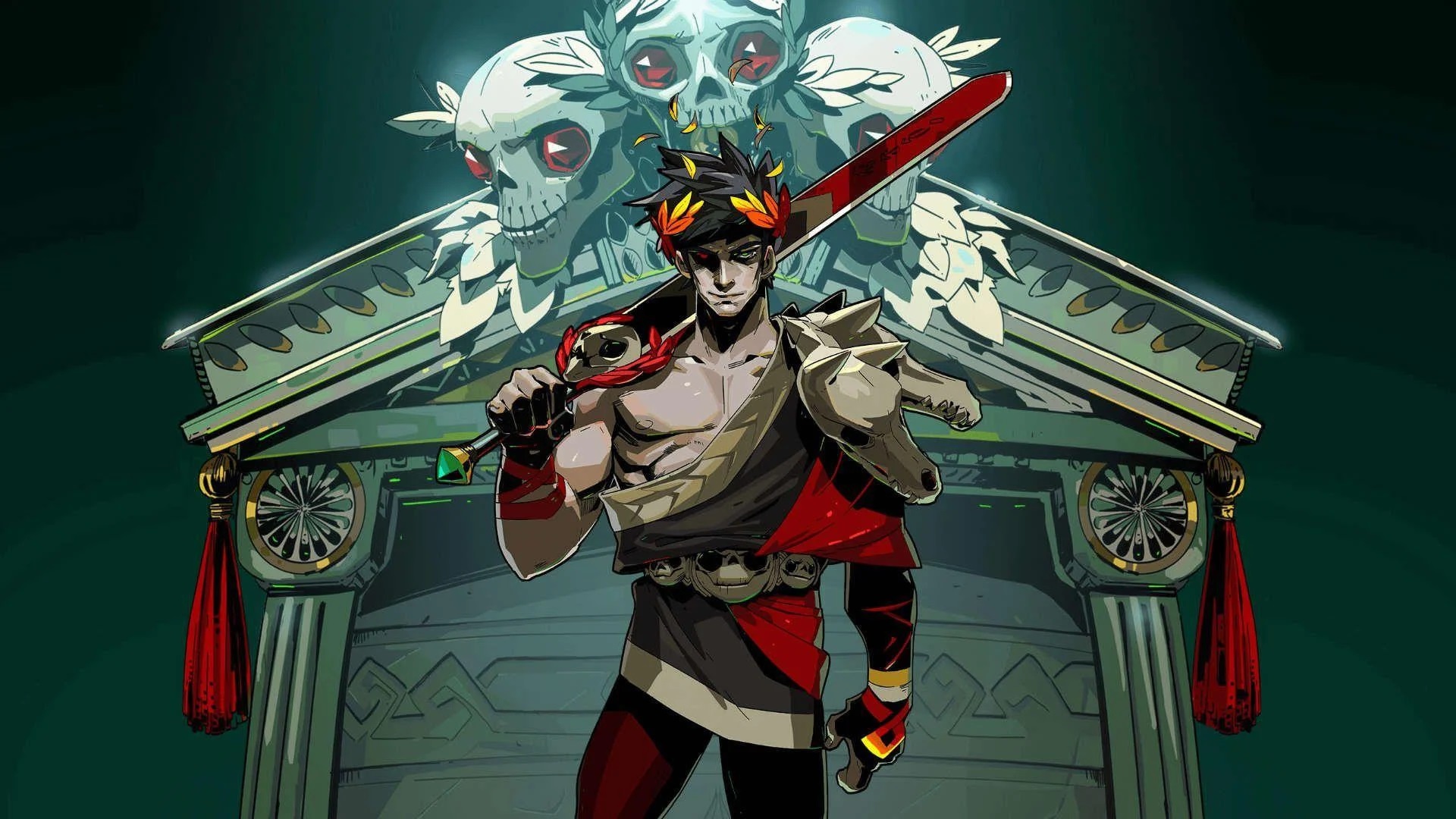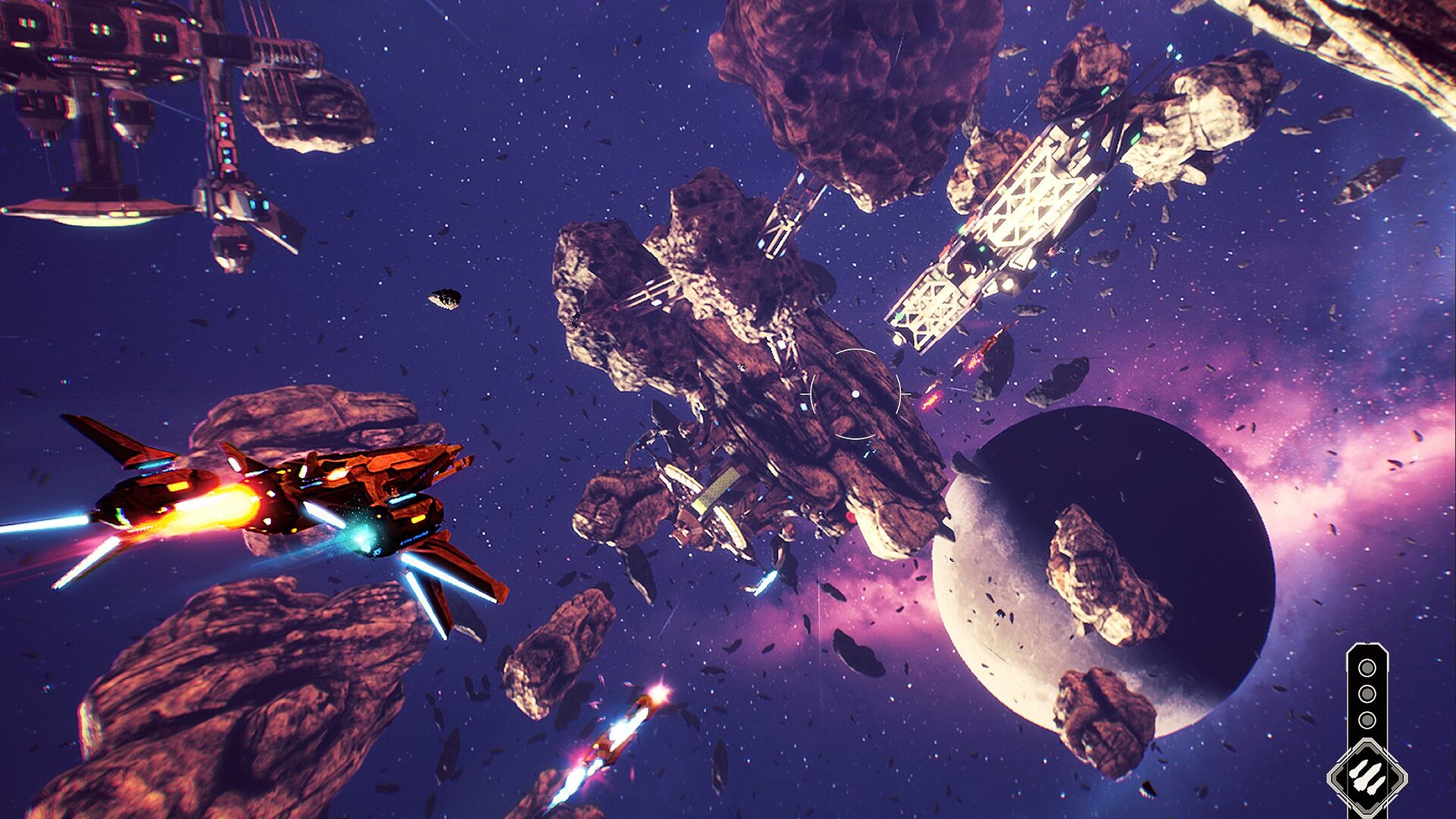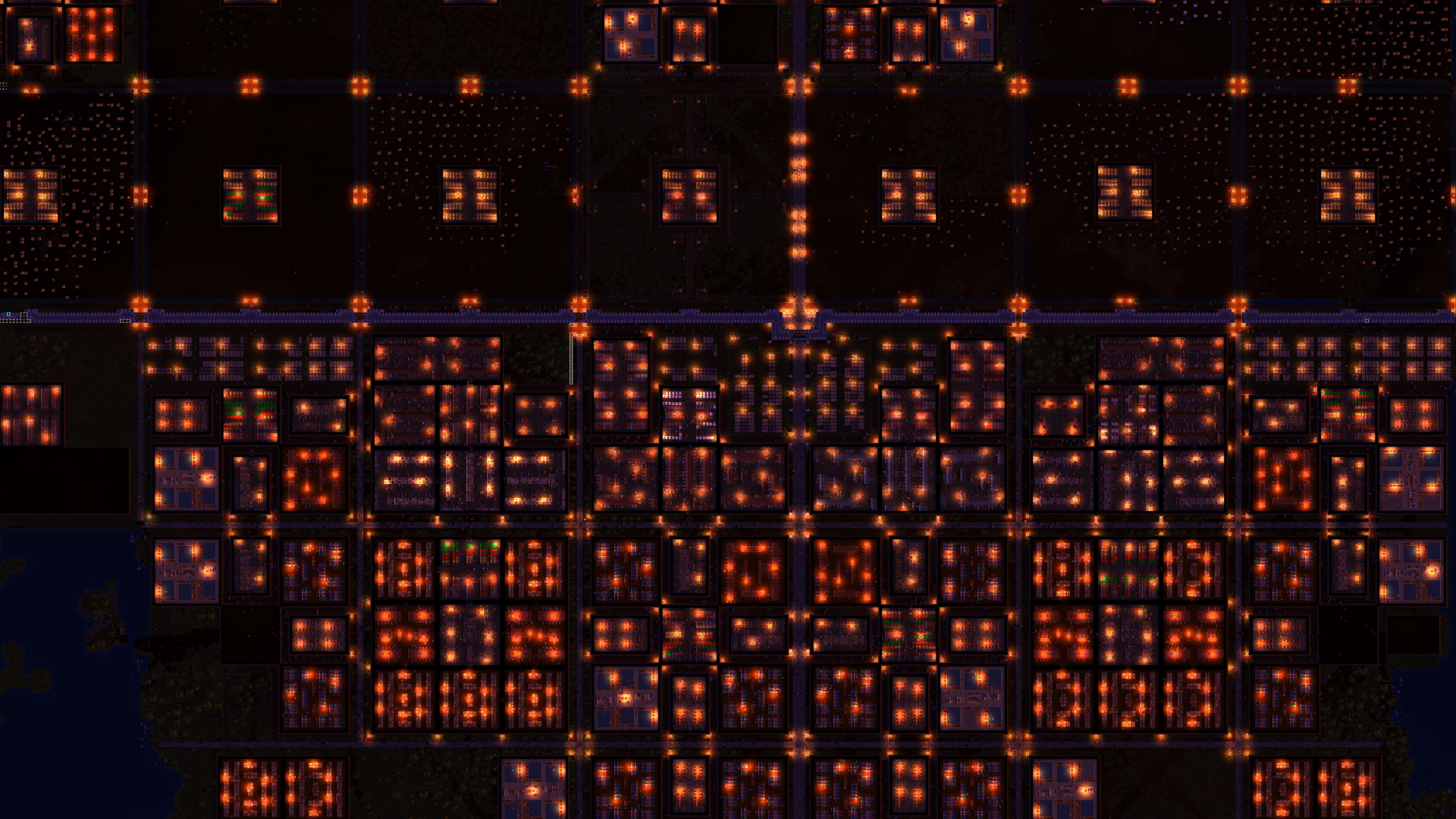Share
Part two of our Tales series retrospective picks back up on the PlayStation 2, as the series starts to struggle more in the West. For the next ten years Tales would have a ton of ups and downs and go through some absolutely massive changes.
If you missed part one of our retrospective series, make sure to catch up here.
Evolving a Series
Tales of the Abyss – 2005

Tales of the Abyss is the first game in the franchise that fully conceptualized the move to 3D, especially in terms of its battle system. It’s also, perhaps, the finest example of how the series subverts typical anime and JRPG tropes, especially with the development of protagonist Luke Fon Fabre. A 2006 Famitsu interview with Makoto Yoshizumi, producer of Tales of the Abyss, sheds a bit of light on how the studio designed Luke,
“We are aiming for the concept that the main character starts with losing his memories of the past, and the fact that he has never seen the outside world. Of course, the player is also the same, through the introduction of the main character who knows nothing, the player feel natural as the player experiences the changes and growth of the main character. That is how through the understanding of the story and the world, as well as the main character’s view will bring the player to reach to a state where they understand and come to a self-awakening. And though we’ve made some adjustments to the battle screen so that whichever character the player decides to choose will become enjoyable, it is still recommended to use Luke.”
Tales of the Abyss was created to celebrate the 10th anniversary of the franchise, and it was actually the first Tales game to release under the banner of Bandai Namco, after the companies merged in February 2005.
The free-run system introduced in Abyss’ battle system was actually intended to be introduced in Tales of Symphonia, but it was ultimately removed due to concerns about how it would let players exploit the game’s AI. Abyss also shares another element with Symphonia, as its story revolves around a religion known as the Order of Lorelei, and its themes definitely raise questions about the nature of organized religion.
Tales of the Abyss was incredibly ambitious, and over the years it seems to have become one of the fan-favorites, with characters like Luke, Jade, and Tear consistently sitting near the top of popularity polls.
Tales of Innocence – 2007

Tales of Innocence was the second Tales game to hit the Nintendo DS, after Tales of the Tempest was a massive disappointment. Luckily, Tales of Innocence fared much better with a fascinating story involving reincarnation and dual-lives. Each of the main characters has inherited supernatural powers from their past lives, in which they were powerful beings that waged war in the “Divine” realm. Because of these powers people who are reincarnated have become known as “avatars,” and are persecuted by the kingdoms of the world. Despite being on a handheld system, Tales of Innocence has an incredibly ambitious story and really goes places with its themes of persecution.
Tales of Innocence was also the first mainline title with development led by Alfa System, the studio that previously worked on the Narakiri Dungeon games and the PSP port of Tales of Destiny 2. Unfortunately, Tales of Innocence is yet another victim that never received an official localization, even after the enhanced remake Tales of Innocence R was released on the PlayStation Vita. It’s never been clear why Tales of Innocence didn’t get a Western release, but it was around this time that the series would start having some trouble in the West.
Despite all that, a fan group known as Absolute Zero did produce a full translation of the entire game. The translation can still be found out on the internet if you look in the, uh, right places.
Tales of Vesperia – 2008

Tales of Vesperia is one of the most critically acclaimed entries in the entire series, with one of the strongest protagonists in the entire JRPG genre. Yuri Lowell isn’t some headstrong teenager, he’s a full-fledged adult with his own idea of justice. In a way, Yuri is a vigilante that takes justice into his own hands and isn’t afraid to kill in order to do so, and that creates a fascinating dynamic in Vesperia.
Bandai Namco made a major push to have a simultaneous worldwide release for Tales of Vesperia, and they nearly had it. The Western version of the game released just three weeks later than the Japanese version, a first for the series. However, the game was only released on the Xbox 360 in North America. A year later in 2009 an enhanced version released for PS3 in Japan, but fans would have to wait all the way until 2019 to experience all of the addition to the port with the Definitive Edition.
In a 2018 interview, Chief Director Yoshito Higuchi commented on the difficulty of Vesperia’s development,
“Vesperia is the series’ first foray into HD, so we were fumbling around a bit during development. Looking back on it though, development was quite tricky indeed. There were a lot of places where we had to engage in craftsman-like work; I remember even Production IG, the studio in charge of making the animated parts HD, saying “are we really going to be able to pull this off?” It was a transition, for sure.”
Tales of Vesperia performed moderately well, selling roughly 410,000 copies in its first fiscal year. Despite the strength of the Xbox 360 at the time the console still wasn’t well-known for JRPG, and that likely played a large part in why the series would go on a short hiatus following the release of Tales of Vesperia.
An Uncertain Future
Tales of Hearts – 2008

Even though Tales of Hearts was the next release in the series, the game wouldn’t come West until 2014, and not a single game in the series would release in the West until four years after Tales of Vesperia. Tales of Hearts originally released on the Nintendo DS in Japan and was the first game in the franchise to have two different versions. The anime version sported anime cutscenes made by Production I.G., while the CG Movie Edition contained CG cutscenes made by the company Shirogumi. A full 3D remake on PlayStation Vita called Tales of Hearts R released in 2013, and that’s the version that would eventually come West.
According to Producer Hideo Baba, Bandai Namco didn’t have any plans to localize Tales of Hearts at all. He told Rice Digital in 2014
“At first we didn’t have any plans to localise Tales of Hearts R in the West, but we received a lot of requests about the PS Vita titles from the US and Europe! To make it happen we had to overcome various problems related to things like human resources and time budgets. We are developing games for the business so we need to succeed in terms of that business. In the end, based on the strategy of Bandai Namco games and the requests from western fans it became possible to bring out Tales of Hearts R in the west.”
While the story of Hearts isn’t exceptional, it has a fun twist on the battle system that puts a huge emphasis on aerial combos.
Tales of Graces – 2009

Tales of Graces was the first game to release after Tales of Vesperia in the West, but it came in the remade PS3 version Tales of Graces F, not the original Wii version. More than anything Tales of Graces is known for its phenomenal battle system, called the Style Shift Linear Motion Battle System. The crux of the system gave each character multiple styles that could be swapped between on the fly, creating a robust experience that provided a ton of options. In terms of story Graces’ main theme is friendship, and it lays it on pretty thick with a light and colorful tone, compared to other games.
Tales of Graces F was a huge relief for Western fans, as it was a sign that the series could still have a bright future outside of Japan. In 2011 Carlson Choi, vice president of marketing at Bandai Namco, told Siliconera,
“We’re actually looking at a much longer-term beyond those two titles of what we can to do bring the Tales series to the fans in the States. There are a lot of Tales titles Namco Bandai could release too like the latest PlayStation 3 game Tales of Xillia or the upcoming PlayStation Vita re-imagining Tales of Innocence R.
Another interesting facet of Tales of Graces F, in particular, is the extra epilogue story that the original Wii version didn’t have. The new story expands on the ending of the original game and even sports Richard, a major character, as a full party member.
Tales of Xillia – 2011

Tales of Xillia is yet another first for the franchise, with two protagonists players choose between, each of which brings a different perspective to the story. Jude Matthis is a medical student who ends up crossing paths with a reincarnated spirit named Mila Maxwell. The pair end up on the run from the government after putting a stop to a weapon of mass destruction called the Lance of Kresnik. Tales of Xillia’s story is more streamlined and shorter than most other titles, but that helps the game be a more focused experience. Of course, players will want to go through both Jude and Milla’s stories in order to see the full experience.
The series’ iconic battle system also goes through some pretty massive changes with Tales of Xillia, because of the game’s partner link system. In battle, characters link together and perform special link attacks and dual rates. The combat in Xillia is incredibly fast and the link system provides dynamic options for switching things up in the middle of battle.
At the time Tales of Xillia released it was the most pre-ordered game in the entire series in Japan, and to date, it’s cleared one million copies sold worldwide. It was clearly a hit in the West as well, and would go on to inform the direction the series would head in, as Hideo Baba described in a Game Informer interview.
“I can surely say that the art style of Tales of Xillia will be a basis for future titles. We introduced the life-size characters to better portray the atmosphere and scale of the adventure, and so players can feel as though they are exploring the world. Though the characters are expressed in life size, the texture is not photo realistic, but is based on the anime and water-color style, which is one of the traditional characteristics of the series.”
Tales of Xillia 2 – 2012

You have to respect Namco Bandai’s efforts to try new ideas with Tales of Xillia 2, especially since the game introduces the series’ first silent protagonists, Ludger Kresnik. Tales of Xillia 2 also brings choice and consequence into the formula, with five different possible endings. Picking up a year after the first game, Tales of Xillia 2 does a great job of showing the impact of previous events, and how it’s changed the lives of the main characters. Notably, the villains of the first Tales of Xillia also become major party members in the sequel.
Combat is virtually the same as the first Xillia, but the big addition here is the three different weapons Ludger can wield and swap between on the fly. He also has a transformation ability known as Chromatus, which feels like it laid the groundwork for what would come in Tales of Zestiria.
While Ludger feels like a pretty standard silent protagonist at first, but near the end, there’s an interesting twist that gets put on the whole idea. As Hideo Baba explained to Gematsu in 2013,
“The story will be developed from his perspective, and he will need to make many choices to proceed with the storyline. Originally, his character is not very unique or standing out, but players will act as Ludger himself, and by selecting so many choices, these activities will develop Ludger—depending on the choices the players selected.”
A New Era
Tales of Zestiria – 2015

Tales of Zestiria spent longer than usual in development, and for good reason, as the development team tried to include open-world elements and make the “scale” of the world grander than ever before. Zestiria but a huge emphasis on larger environments and exploration, and battles take place directly in said environment instead of cutting to a separate battle screen. Combat uses a link system similar to Xillia, but introduces a brand new element called Armitization. Sorey and Rose can fuse with their linked Seraph character and enter a brand new Armitize form that has extremely powerful attacks, speed, etc.
The ideas the team wanted to implement with Tales of Zestiria were almost too ambitious in some way, leading to the studio having to create a brand new engine, instead of just modifying the same one used for most of the previous entries. As the title released for the 20th anniversary of the series, the development team was also made up of a wide array of series veterans. Interestingly, Tales of Zestiria also saw the two series’ longtime character designers, Kosuke Fujishima and and Mutsumi Inomata, collaborate on the designs. At the same time, it was also the first game that had Motoi Sakuraba and Go Shiina collaborate on the soundtrack. Ultimately Tales of Zestiria is one of the more divisive entries in the franchise, but it was an effort to return to the roots of the series, as Hideo Baba describes in an interview with The Arcade.
“We are trying to return to the traditional fantasy world which was described in the first title Tales of Fantasia, so at the time the graphic was 2D but now we have 3D graphics and we want to try to describe our fantasy world with this kind of 3D graphics, so you will be able to find big differences between the two.”
Tales of Berseria – 2016

Tales of Berseria is a much darker tone than normal for the series, with a story that puts its main characters through severe mental trauma. What’s really fascinating about Berseria, however, is that the story takes place in the same world as Tales of Zestiria, thousands of years before the previous game. Tales of Berseria retroactively makes the story of Zestiria even better, providing extra context and emotion to the events. Producer Yasuhiro Fukaya commented on the darker story, saying
“There are many video games where everything is really dark, but in Berseria, even though the main storyline is dark, there are features like skits and sub-events that allow players to see many aspects of the characters. Velvet may have a demonic power in her left hand, but she doesn’t lose her human emotions, her kindness. So in the scenes where Velvet takes care of Laphicet, and the other characters, you can see her grow.”
The most notable thing about Tales of Berseria, however, is that the game introduces the series’ first female protagonist with Velvet Crowe, who doesn’t share the spotlight like with Jude and Milla in Tales of Xillia. Velvet is an absolutely brilliant multilayered character who provides a unique point of view to the overarching story.
Tales of Berseria features one of the most complex battle systems to date, and it’s the last game in the series to release. From here the Tales studio undertakes a massive new project with Tales of Arise, which drops the tried-and-true engine and switches to Unreal Engine 4. With five years in development, Tales of Arise has had the longest development cycle of any game in the franchise.




